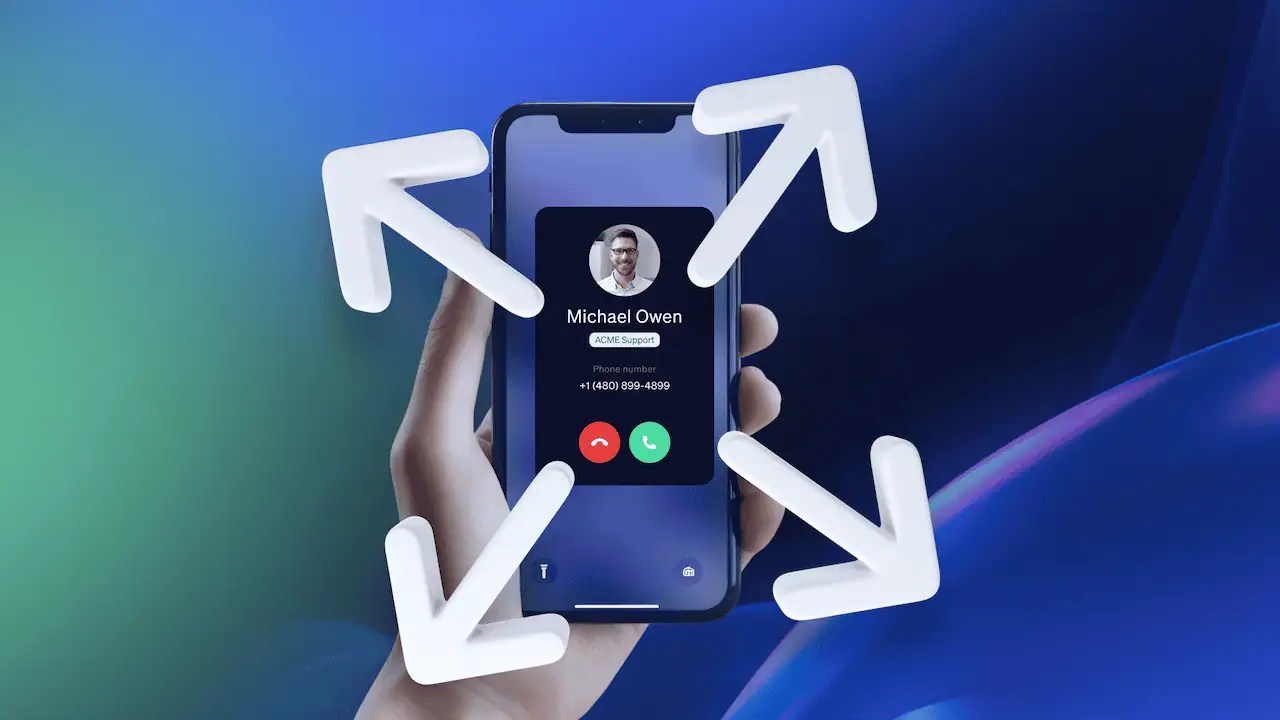Our guide dives into social CRM, how it can benefit your business, and the tools you can use to enhance your operations through social insights.
Many of you are familiar with social media management. Eventually, you’ll want to tie customer relationships and business functions around each interaction. Soon enough, you’ll need a robust social CRM to scale customer support and sales motions across social channels.
The right social media management platform with social CRM tools helps you track and manage interactions and better understand your current and potential customers. Each interaction offers valuable insights, consolidating data in one place.
What is Social CRM?
Social customer relationship management, or social CRM, combines traditional relationship management practices with social media engagement to provide a more personalized experience. This helps you better connect with your customers, provide better service, and gather actionable insights for your customer service, sales, and marketing teams.
Essential social CRM functions
- Social Listening and Monitoring – Track brand mentions, customer feedback, and conversations across social platforms to identify trends, sentiment, and engagement opportunities in real-time.
- Unified Customer Profile Management – Aggregate customer data from social media interactions, purchase history, and support tickets into comprehensive profiles for personalized engagement and targeted marketing.
- Social Customer Service Integration – Streamline customer support by managing social media inquiries, complaints, and requests alongside traditional channels, enabling faster response times and consistent service delivery.
Why Businesses Need A Social CRM
More than 5 billion people use social media to laugh, relax, and interact with others. Social CRMs allow businesses to take advantage of this massive audience by connecting with customers where they already are, providing convenient support, engaging with them in real time, improving brand reputation, and personalizing messaging.
Not only that, but our contact center statistics survey found that 25% of customer service requests are handled via social media channels. If you aren’t present on social media with a social CRM, you risk missing out on these crucial interactions.

Related: 7 Insanely Useful Integrations for Businesses
Social CRM vs. Traditional CRM Differences
Traditional CRM and Social CRM overlap in principle, as they’re both rooted in managing customer relationships. However, their key differences lie in their approach, data sources, and communication channels.

Traditional CRM relies on insights and internal data from customer interactions and purchase history. Most interactions within traditional CRMs are business-oriented, like assisting salespeople in closing deals with prospects or helping support agents resolve customer concerns. These come from traditional channels, like phone, email, and live chat, and focus on gathering data, prospecting, lead nurturing, and sales pipeline management.
Social CRM taps into data from social media and online review sites, emphasizing customer engagement, social listening, relationship building, and brand loyalty. Interactions within social CRMs are more focused on relationship building and can be better compared to hosting a karaoke night with prospects rather than selling to them. It offers a comprehensive view of customer behavior and sentiment on social media and helps spark social media conversations across platforms like Facebook, Instagram, Threads, and X (formerly Twitter).

Social CRM Use Cases
Your business can use social customer relationship management across various departments within your organization. Here’s how to apply it to customer service, sales, and marketing.
Social CRM for customer service
Social media enables real-time problem-solving by allowing businesses to monitor and quickly address public customer concerns, enhancing satisfaction. Social CRM tools provide insights into customer preferences, allowing for personalized support experiences. By offering responsive service through social media, businesses can build trust and loyalty while also gathering feedback to improve customer service processes.
A customer tweets about a negative experience with your product. Your social CRM system flags the mention, allowing a customer service representative to reach out, apologize, and offer a replacement from a single interface.
Social CRM for sales
Social media platforms are rich sources of potential leads, and social CRM tools help identify the people interested in your products or services based on their activity. These tools also aid in nurturing leads by providing valuable content and building relationships. Additionally, social media CRM empowers salespeople to connect with prospects more personally and professionally, showcasing expertise and building trust.
A social CRM tool identifies someone who keeps posting about a specific product category. A sales rep can send a personalized message offering additional product information or a free consultation.
Social CRM for marketing
Social media CRM enhances brand awareness by enabling the creation of engaging content and participation in relevant social media conversations. It leverages social media data to craft targeted marketing campaigns that resonate with specific customer segments. Additionally, Social CRM tools facilitate social listening, allowing businesses to monitor brand mentions and trends and adapt their marketing strategies based on customer perceptions and emerging trends.
A social CRM tool reveals that a specific social media influencer consistently generates positive buzz about your product. You can then collaborate with the influencer to create sponsored content or promotions.
Social CRM for product research
Social customer relationship management helps product managers understand their Ideal Customer Profile (ICP) by analyzing social media content and revealing key interests, challenges, and perspectives. This understanding informs data-driven decisions for product development, allowing managers to identify feature requests, areas for improvement, and emerging trends. Social media CRM also enhances research and development efforts by aligning them with customers’ real-world needs and frustrations.
A social CRM tool finds that a large segment of your ICP is consistently voicing frustration about a specific limitation of your product. This can inform product development efforts by prioritizing the creation of a new feature that addresses that pain point.
Social CRM Benefits
Social CRM offers a multitude of benefits for businesses. Here are some key advantages.
👂 Enhances social listening: Social CRM empowers businesses to monitor online conversations and brand mentions across various social media platforms, allowing you to identify customer sentiment, track brand perception, and address any emerging issues promptly before social media crisis management is necessary.
😀 Improves the customer experience: The customer experience (CX) is how your customers perceive your business across all interactions, from initial discovery to post-purchase. Social CRMs can give you valuable customer insights to improve your CX—whether small changes to improve your customer service or larger ideas that could lead to product improvements.
🚨 Grows brand reputation: Businesses active on social media are more responsive to their customers and are seen by a wider audience. This could lead to word-of-mouth marketing and a more positive brand image.
🌐 Helps lead generation: Social media CRM tools can help you identify potential customers interested in your products or services based on their social media activity and interactions. This allows your marketing and sales teams to focus on qualified leads.
🚩 Provides actionable insights: Social CRM goes beyond simply collecting social media data. It provides valuable insights into customer behavior, preferences, and pain points. By analyzing this data, businesses can make data-driven decisions about product development, marketing campaigns, and customer experience strategies.
📱 Enables omnichannel support: Social CRM creates a unified platform for managing customer interactions across all channels, including social media. This eliminates silos between departments and ensures a consistent and seamless customer experience.
Social CRM Challenges
While a CRM for social media offers significant benefits, there are also challenges to consider. These include:
- Data privacy: Social media data raises privacy concerns, requiring businesses to comply with data protection regulations and be transparent about data collection and its use.
- Data management: The vast amount of social media data can be overwhelming, necessitating efficient data management tools and strategies in social CRM to organize, analyze, and extract valuable insights.
- Scalability: As your social media presence grows, choosing a scalable social CRM solution is crucial to managing the increasing volume of interactions and data across platforms.
- Relevance: Social media users aren’t confined to one space. Focus on the right platforms—where your customers are most prevalent—to best connect with your audience and gain relevant information.
- Measuring progress: Being active on social media is excellent, but you must also focus on the right actions. Make sure you are engaging with your audience in a way that makes a measurable impact on your operations.
Key features of social CRMs
There are several types of social CRMs on the market, but no matter the provider, they typically include features like:
- Multi-platform integrations: It’s inefficient for businesses to log into social media sites multiple times per day. Multi-platform integrations allow you to monitor interactions all from one interface.
- Social listening: Automatically tap into what consumers are saying by getting notified of tags or mentions across platforms.
- Lead capture: While it’s nice to have conversations with customers, these interactions need to lead somewhere. Lead capture capabilities gather information on client interactions for sales and marketing teams.
- Omnichannel engagement: Social CRMs may be integrated into wider CRM platforms. In this instance, an omnichannel customer experience is a must—it provides a unified view of customer interactions across social media, email, chat, and more.
Real-time feedback: Social media moves fast; yesterday’s post may be irrelevant today. This feature allows teams to capitalize on social media interactions as they happen and manage customer feedback.
Social CRM Metrics
Social customer relationship management can surface a wide range of metrics that management and decision makers can tap into to find valuable insights about your customer base.

Here are a few key metrics:
- Traffic: Tracking the number of people who visit your website or landing pages from social media links will help you understand the effectiveness of your social channels driving traffic.
- Engagement: Measure how people interact with your content, account, or social media post via likes, comments, and reposts.
- Brand mentions: Monitor how often your brand is mentioned on social media, even if it’s not directly tagged. This helps you understand brand awareness and identify any emerging trends or conversations about your brand.
- Customer demographics: Gain insights into the demographics of your social media audience, such as age, location, gender, and interests. This allows you to tailor your social media content and marketing strategies to target your ideal customer better.
- Sentiment: Analyze the emotional tone of social media conversations about your brand. Sentiments can be positive, negative, or neutral. Identifying negative sentiment allows you to address customer concerns promptly.
- Brand affinity: Measure how emotionally connected or loyal customers are to your brand, which can result in advocacy.

3 Examples of Social CRM Software
While there are many social CRM options available, here are three social CRM examples:
- Nextiva: Nextiva offers an AI-powered omnichannel contact center that integrates social media management alongside features like email, phone systems, and video conferencing. This can be a good fit for businesses seeking an all-in-one communication and social CRM solution.
- Sprout Social: Sprout Social is a social CRM platform known for its user-friendly interface and social listening capabilities. It allows businesses to monitor brand mentions, schedule social media posts, and engage with customers across various platforms.
- Hootsuite: Hootsuite is another social CRM solution for social media management. It provides features for scheduling posts, managing multiple social media accounts, and running social media campaigns.
When choosing a social CRM platform, consider your specific needs and budget. Some platforms offer a wider range of features, while others specialize in specific areas like social listening or social media marketing.
Maximize Your Customer Relationships with Nextiva
Creating a social CRM strategy is crucial for businesses to provide personalized experiences where the customer already is: social media. From small businesses to large enterprises, social CRM enables omnichannel support, enhances social listening, helps generate leads, and provides actionable insights for data-driven decisions.
Nextiva’s marketing suite with social CRM tools can help you achieve your business goals and meet customer needs. Try Nextiva today and start engaging more with people across channels so you can build lasting customer relationships and become brand champions.
Related: How Social Media Customer Service Platforms Help Your Business
Elevate your online brand reputation.
Never miss a reply, comment or message again. Read and respond across all channels in real time.
Social CRM FAQs
Learn more about social customer relationship management with these FAQs.
There are many social CRM options available, but here are three popular choices. Nextiva offers a unified communication platform integrating social media management with email, phone systems, and video conferencing, ideal for businesses seeking an all-in-one solution.
Other social CRM platform options include Sprout Social, which is known for its user-friendliness and social listening capabilities. It allows businesses to monitor brand mentions, schedule posts, and engage with customers. Hootsuite focuses on social media management, providing features for scheduling posts, managing multiple accounts, running campaigns, and offering robust analytics tools.
While social CRM offers benefits, managing data from various platforms can be complex and requires social media strategies to ensure accuracy and avoid silos. Businesses must clearly define their goals and choose appropriate solutions to get the most out of their social customer relationship management. Plus, social media data raises privacy concerns, making it important to comply with data protection regulations.
Businesses use social CRMs to enhance customer service by responding directly to inquiries and complaints on social media. They generate leads by identifying potential customers through social media interactions and build brand awareness through engaging content and relevant conversations.
Social customer relationship management also help develop targeted marketing campaigns by leveraging social media data to understand customer demographics and preferences, and they provide insights into customer sentiment, pain points, and brand perception.
Social customer relationship management software integrates with various social media platforms through APIs, allowing businesses to manage all social media interactions from a single platform. This integration enables scheduling and publishing posts across different platforms, monitoring brand mentions and conversations in real-time, and analyzing social media data to gain insights into customer behavior and sentiment.

















 Marketing & Sales
Marketing & Sales 









